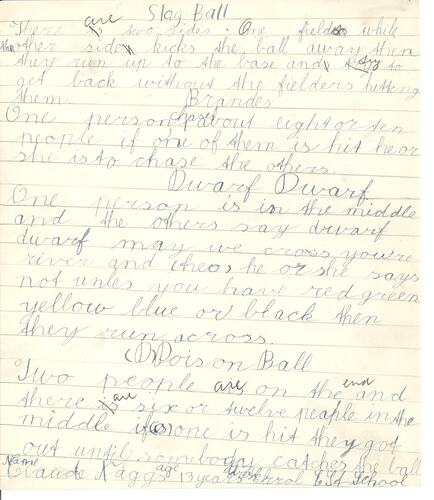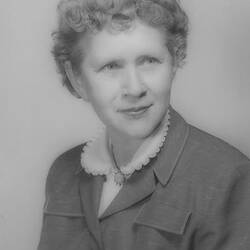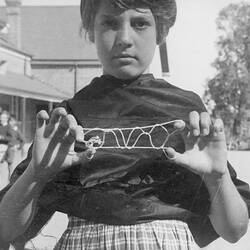Summary
Game type: 'Slag Ball', 'Brandes' [Brandy], 'Poison Ball' (ball games), 'Dwarf Dwarf' (chanting game)
Alternative types: chasing games, running games, team games, language play
Handwritten description of the ball games 'Slag Ball', 'Brandes' [Brandy], and 'Poison Ball' and the chanting game 'Dwarf Dwarf' compiled by Claude Naggs, a 13 year old student at Errol Street Primary School, for Dr Dorothy Howard in August 1954. Naggs describes 'Slag Ball' as a game requiring two teams and a ball. He writes that one team throw the ball before running towards a base. The opposing team fetch the ball and try to throw it at the running players. To play 'Brandes' [Brandy], Nagg states that eight or 10 players and a ball are required. One player chases the other children, attempting to hit them with the ball. Naggs describes 'Poison Ball' as a game requiring two players standing on either side of a group of six to 12 children. The two players attempt to hit the group of children with a ball to eliminate them from the game. Naggs notes that this continues until one of the group catches the ball. He also describes a chanting game called 'Dwarf Dwarf', which involves players asking one child, the 'dwarf', 'Dwarf Dwarf may we cross your river?'. Naggs explains that the 'dwarf' responds 'Not unless you have red, green, yellow, blue or black', which presumably refers to the colour of clothing. The appropriate children are allowed to run past the 'dwarf'.
One of a collection of letters describing a children's game written to children's Folklorist Dorothy Howard between 1954 and 1955. Dr Howard came to Australia in 1954-55 as an American Fulbright scholar to study Australian children's folklore. She travelled across Australia for 10 months collecting children's playground rhymes, games, play artefacts, etc. This letter, together with the other original fieldwork collected by Dr Howard during this period, is preserved in the Dorothy Howard Collection manuscript files, part of the Australian Children's Folklore Collection (ACFC), Archive Series 3. The ACFC is an extensive collection documenting children's folklore and related research.
Physical Description
Handwritten game description in blue ink on paper. Features text written on one side of page only.
More Information
-
Collection Names
Australian Children's Folklore Collection, Dorothy Howard Collection
-
Collecting Areas
-
Acquisition Information
Cultural Gifts Donation from Dr June Factor, 18 May 1999
-
Acknowledgement
Donated through the Australian Government's Cultural Gifts Program.
-
Author
Claude Naggs - Errol Street Primary School, Greater Melbourne, Victoria, Australia, Aug 1954
-
Addressed To
-
Collector
-
Organisation Named
Errol Street Primary School, North Melbourne, Greater Melbourne, Victoria, Australia
-
Classification
-
Category
-
Discipline
-
Type of item
-
Overall Dimensions
191 mm (Width), 220 mm (Height)
Orientation: portrait
-
Keywords



